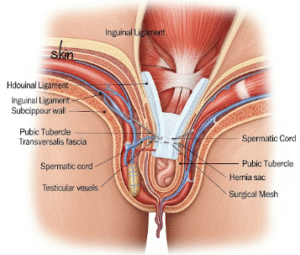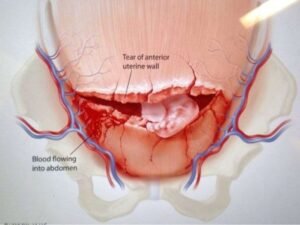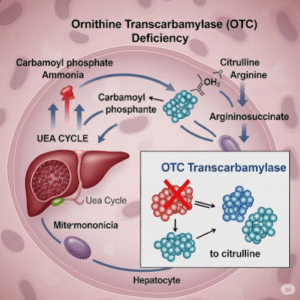Overview
Ear bleeding, medically known as otorrhagia, refers to the presence of blood coming from the external or middle ear. It can result from trauma, infections, foreign objects, or underlying medical conditions. Ear bleeding can affect hearing, balance, and overall ear health, and may sometimes indicate serious issues requiring immediate medical attention. In Korea, ENT (Ear, Nose, and Throat) clinics and hospitals offer advanced evaluation and treatment for ear bleeding and related disorders.
Highlights:
➤ Medical emergency potential – Can indicate severe trauma or infection
➤ May affect hearing and balance – Requires timely evaluation
➤ Common causes: Trauma, infections, foreign bodies, tumors
Key Facts
➤ Prevalence: Ear bleeding is relatively uncommon but can occur in all age groups.
➤ Age affected: Can affect children, adults, and the elderly, depending on cause.
➤ Gender: Both men and women are affected equally, though trauma-related cases may be more common in men.
➤ Impact: Untreated ear bleeding can lead to hearing loss, chronic infections, or life-threatening complications if associated with skull fractures or intracranial injury.
What is Ear Bleeding?
Ear bleeding is defined as the discharge of blood from the ear canal, which may be fresh, dark, or mixed with pus or fluid. It can originate from:
- External ear: Due to trauma, scratches, or foreign objects
- Middle ear: Often linked to infections, eardrum perforation, or cholesteatoma
- Inner ear: Rare, may be associated with severe trauma or vascular disorders
Highlights:
➤ External or middle ear origin – Important to identify source for treatment
➤ May accompany pain, dizziness, or hearing loss
➤ Sudden or gradual onset – Depends on cause
What Symptoms Are Related to Ear Bleeding?
➤ Blood from the ear canal – Bright red or dark red in color
➤ Ear pain or discomfort – Often accompanies trauma or infection
➤ Hearing changes: Partial hearing loss or muffled sound
➤ Dizziness or vertigo – If middle or inner ear structures are affected
➤ Discharge with pus or fluid – Indicates infection
➤ Tinnitus: Ringing or buzzing in the ear
➤ Fever or malaise: In case of systemic infection
What Causes / Possible Causes
➤ Trauma: Direct injury to the ear, skull fractures, or foreign objects
➤ Ear infections: Otitis externa or otitis media with eardrum perforation
➤ Cholesteatoma: Abnormal growth in the middle ear causing erosion
➤ Tumors or vascular malformations: Rare but serious causes
➤ Barotrauma: Pressure changes, such as during diving or flights
➤ Coagulopathy or bleeding disorders: Increased bleeding tendency
➤ Post-surgical complications: Following ear surgeries or procedures
Highlights:
➣ Ear bleeding may indicate minor injury or life-threatening conditions
➣ Accurate diagnosis is essential for preventing permanent damage
When Should I See My Doctor?
➤ Sudden or profuse bleeding – Potentially a medical emergency
➤ Associated severe ear pain or hearing loss
➤ Dizziness, vertigo, or imbalance
➤ Persistent or recurrent bleeding – Suggests chronic infection or structural problem
➤ Head trauma or skull fracture history – Requires immediate evaluation
Highlights:
➣ Early consultation at an ENT clinic in Korea ensures correct diagnosis
➣ Delayed treatment may lead to hearing loss, infection, or intracranial complications
Care and Treatment
➤ Medical evaluation: Identification of bleeding source using otoscopy, imaging, and laboratory tests
➤ Control of bleeding: Ear packing, cauterization, or topical agents
➤ Infection management: Antibiotics for bacterial infections of external or middle ear
➤ Pain management: Analgesics for discomfort
➤ Foreign body removal: Safe extraction of objects causing trauma
➤ Monitoring for complications: Regular check-ups for hearing, balance, and eardrum integrity
Highlights:
➣ Treatment depends on cause, severity, and location of bleeding
➣ Multidisciplinary approach may involve ENT specialists, audiologists, and surgeons
Treatment Options in Korea
Medical Treatments:
➤ ENT clinics: Comprehensive examination and treatment for infections, trauma, and eardrum perforation
➤ Pharmacological therapy: Antibiotics, anti-inflammatories, or pain management medications
➤ Surgical management: Repair of perforated eardrum, cholesteatoma removal, or trauma reconstruction
Advanced Procedures:
➤ Endoscopic ear surgery: Minimally invasive approach to repair eardrum or remove growths
➤ Microsurgical techniques: For delicate reconstruction and hearing preservation
➤ Skull fracture management: Collaboration with neurosurgery if needed
Rehabilitation & Follow-Up Care:
➤ Regular monitoring of hearing and balance function
➤ Education on ear hygiene and injury prevention
➤ Holistic care in Korea integrates ENT, audiology, and surgical support
Highlights:
➣ Korean clinics provide advanced diagnostics, surgical expertise, and rehabilitation programs
➣ Timely intervention ensures healing, prevents complications, and restores hearing function













